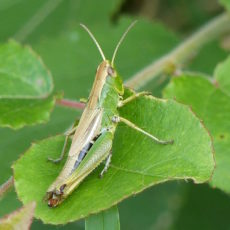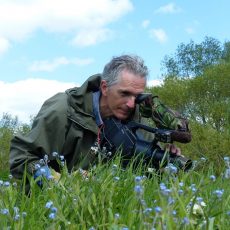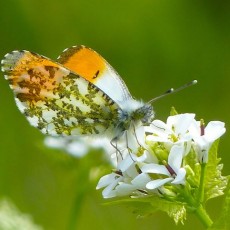During the blackberry season many small mammals enjoy feasting on them with obvious relish and use the bramble bush as a way of avoiding predators. It has been a privilege to encounter a water vole who tried to look around a blackberry laden bramble to see which clumsy wildlife photographer had made that noise? Almost overbalancing in his endeavours, the tasty treat and desire to eat soon overrode his fear and he resumed breakfasting. I have also watched a bank vole in what can only be described as the most charming and magical of Beatrix Potter moments, as it searched with admirable agility and ease amongst the bramble thorns for the choicest berries, as this short film shows.
They are also sought after by dormice, wood mice, foxes and badgers who will eat fallen blackberries, plus any that they are able to reach on the bushes. The human mammal finds them equally delightful and tasty! Crows, woodpigeons, flycatchers, nuthatches, finches, starlings, thrushes, blackcaps, waxwings, pheasants and moorhens all enjoy a blackberry, and I have observed a water rail using bramble for cover at dawn. That is quite a list of bird visitors.
To these species, entomologist Martin Harvey advises that we need to add adult moths who seek out over-ripe blackberries as a food source. If you go out with a torch as the berries reach this state you can find lots of moths feeding on them in a good spot.
The blackberries are finished but the bramble is home to many
As blackberries finish their season in autumn, most people would regard the bramble bush as having no use and so may be tempted to bramble bash it out of existence. However, over the spring and summer moths such as buff arches and fox moths use bramble as a larval foodplant, and it’s the sole larval foodplant for the beautifully named peach blossom moth. At this time of year they’ll be overwintering deep within the leaf litter, but come spring they’ll emerge from their pupa and make their way up the nearby bramble to inflate their wings and take flight.
In spring, nightingales, robins, wrens, thrushes, blackbirds, warblers, finches, whitethroats and long-tailed tits nest amongst its safe haven brambles, which offer protection from predators.
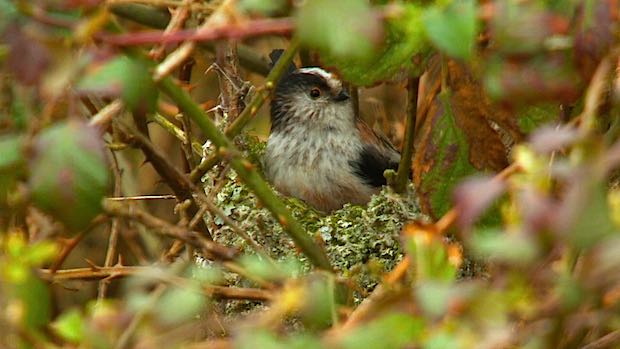
Bramble blossom is rich in pollen and nectar
There are many invertebrates which use brambles for pollen and nectar from May onwards when it is resplendent with beautiful white-pink blossom. Insects visiting the flowers for food include bumblebees, honey bees, solitary bees, hoverflies, wasps, butterflies, flies and lacewings, many of which also nest or reproduce on the leaves or in the stems.
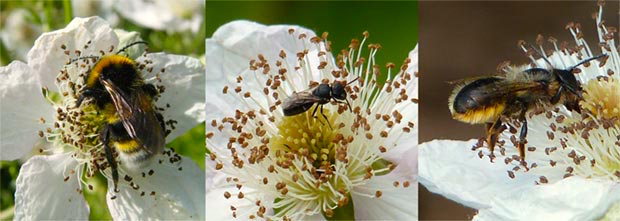
No extensive study has ever been done on the many species of wildlife that depend upon or visit bramble. As a large, abundant open flower there is virtually no physical limitation for the species that can use them. This means pretty much everything seems to do so, and makes bramble one of the most wildlife-rich habitats that you can have on any site.
Some of the smaller solitary bee species, such as Hylaeus, will have created brood cells in some of the bramble’s hollowed-out stems. These are arranged in a linear series down the stems, and waterproofed with a cellophane-like material secreted by the bee. Each pollen-filled cell contains one egg, which overwinters in a suspended-animation pre-pupa state. They do not have the option of bamboo bee hotels to overwinter in the countryside, so the hollow stems of bramble and hogweed are vital for them.
Prickly bramble beauty
There is beauty in the ‘prickly trails half over the lane’ and pathways I once knew, enjoyed and loved which are also more attractive to birds and mammals, because it conceals them. It is where I see them, even now. It made me feel wholly connected to nature during my childhood of the 1950’s and 60’s.
And sloes, dim covered as with dewy veils,
And rambling bramble-berries, pulpy and sweet,
Arching their prickly trails
Half o’er the narrow lane
Autumn. John Clare, 1793-1864
It was a countryside managed more by Nature’s hand and less by man’s with a bit of judicious cutting back where necessary during the winter months in the time honoured way. It was a gentle time when more respect and care was shown towards Nature, when we kept to footpaths as we walked through fields, so that dainty wildflowers and their wildlife were not damaged underfoot, or had to put our heads on the horse’s back as we rode beneath trees on grassy lanes and we were not obsessed with tidying up landscapes into uninspiring green deserts or demanding the trees were cut so that we could sit upright on our horses. Not having an overmanaged landscape taught us to be resourceful.
To encourage wildlife diversity you could manage your bramble on rotation by cutting back one third in any year to achieve a habitat mosaic. This is because long-tailed tits prefer to nest in old growth whilst harvest mice seek new growth along the edge of a patch. Do send us images of your local bramble patch wildlife, or even one in your very own garden. We would love to see them!
With my sincere thanks to editor Dr Richard Comont of the Bumblebee Conservation Trust and for his expert advice.
Article by Jo Cartmell

